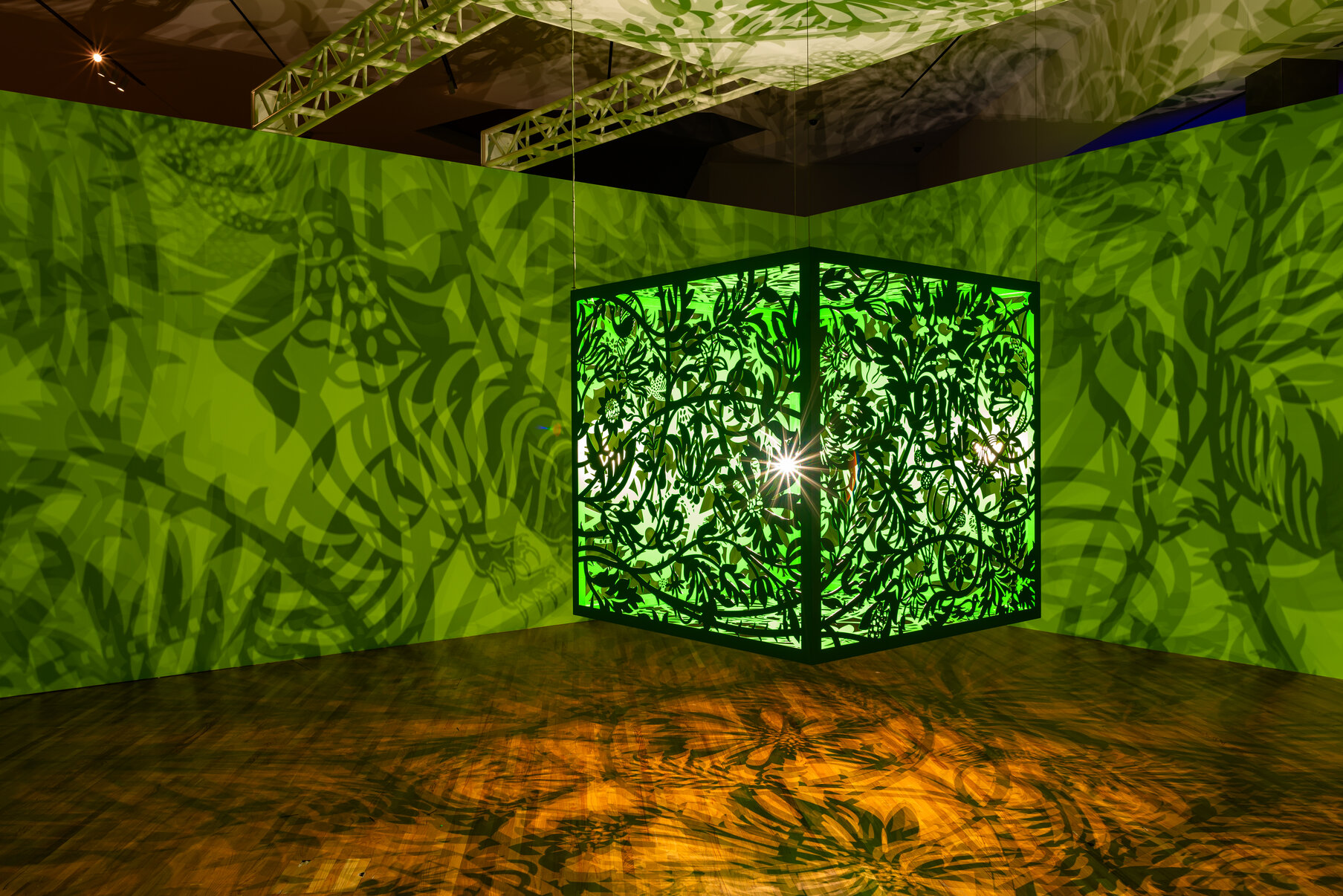by Hugh Alcock
A new gallery has opened in Toronto – Sheff Contemporary – located in a surprisingly airy basement on Danforth Ave. Given the number of commercial galleries that have closed in recent years, its opening is in itself something to celebrate. Its inaugural show highlights the work of Steve Rockwell. The gallery’s owner, Saeed Mohamed has known Rockwell many years, and has always been greatly impressed by his work.
The space, Mohamed explains, is important in the sense that he understands how art is ineluctably an in-person experience. Indeed, it the experiencing of art in the gallery setting that is a central idea of Rockwell’s work. At the same time, Mohamed is not committed to keeping the gallery in one location. Rather, he appreciates that it is the people – artists, audience, buyers etc. – who together are the essential elements of this experience. Art, he feels, is often elitist and he is keen, instead, to promote art in a way that makes it more relatable to the public, who like himself, may not be connoisseurs in the traditional sense. His hope is to foster an inclusive crowd of art enthusiasts who will facilitate this aim. He sees his role as providing the space and the opportunity to experience art. Certainly judging from the crowd who showed up for the opening reception, he’s off to a good start.
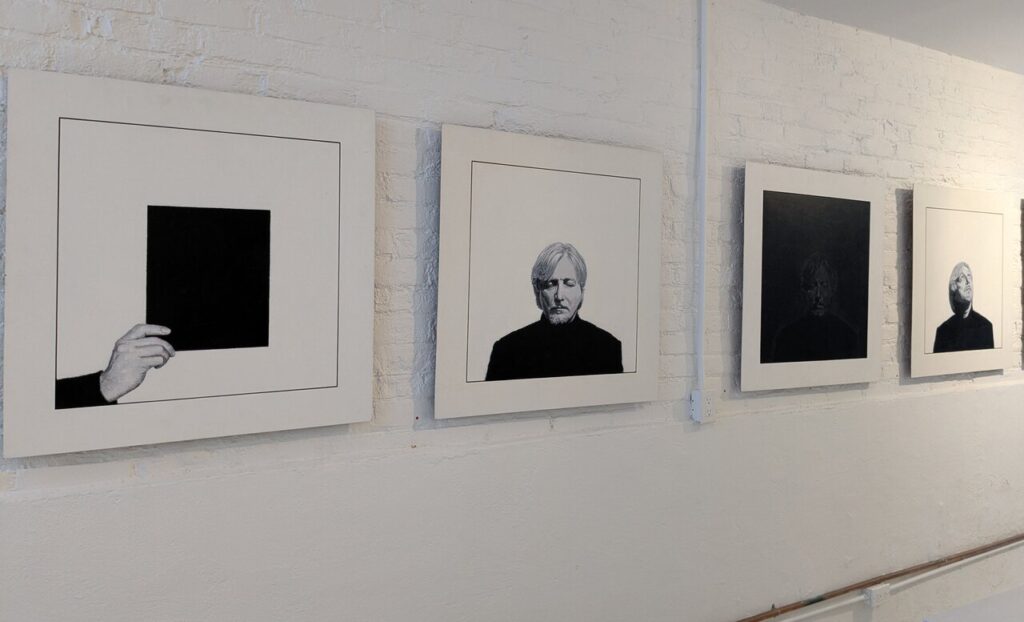
Rockwell’s show is about art. It is, one might say, second order art. Moreover it is a breed of conceptual art, based on performance of a peculiarly inconspicuous kind. Rockwell’s work invariably has some story behind it. For instance, in one of his black and white paintings, one confronts an image of the artist himself, arms fully spread, with bright light radiating from his torso, titled My Spirit Lives Here! (1996). Nearby is another image of him, titled Blackout, which in contrast to his effulgent self, has him shrouded in darkness – his features barely discernible.
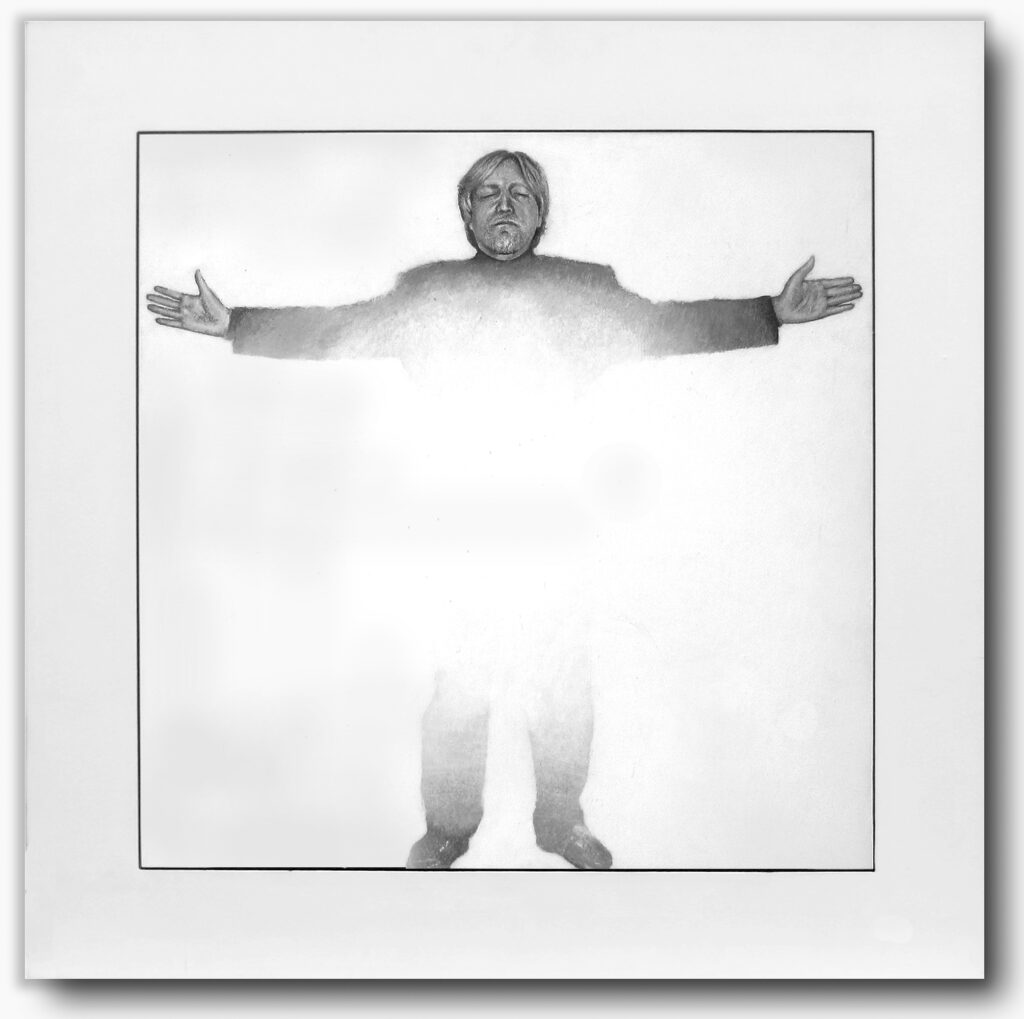
These two paintings are part of a series of five, on the theme of meditating on various spaces in galleries, that is ostensibly based on a story akin to that in the Bible of the conversion of Paul on the road to Damascus. A journey from the infidel’s blindness to the light of faith. But any such story line surmised by the viewer, it turns out, is post hoc. The order of the paintings was chosen long afterwards. Each is a record of some event he experienced while executing a performance he titled Meditations on Space. It involved him showing up in some reputable gallery in Switzerland, France, Toronto, Los Angeles or New York, announcing to its custodians that he was there to meditate on the gallery space. Most acquiesced and let him be. But part of the performance concerned his interactions with people and with the space itself. While in the Ernie Wolfe Gallery, Los Angeles, for instance, its owner shouted out to Rockwell ‘This is where I live. My spirit lives here!’, hence the title of the painting mentioned above.
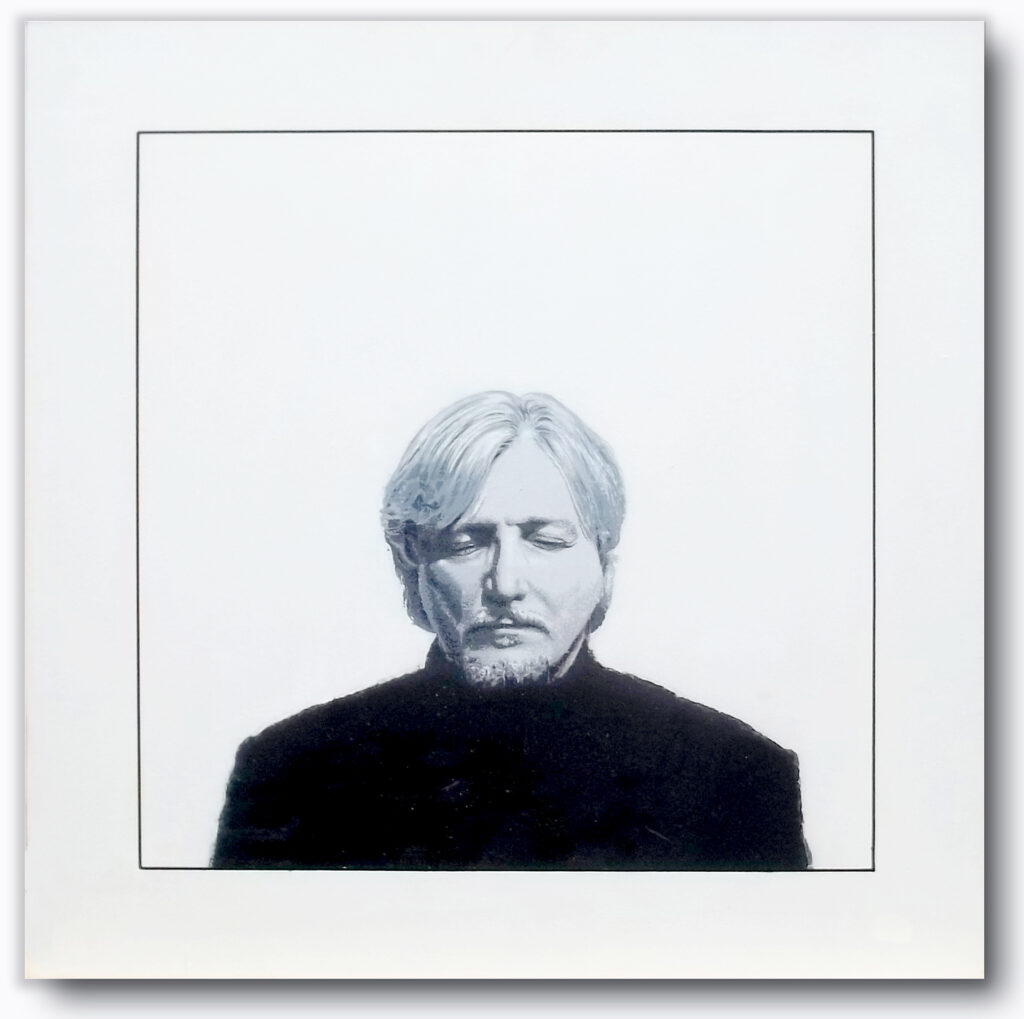
While these works are not literally biblical in derivation, they do touch on big questions – on life and death specifically. In Blackout we see a grainy barely discernible image of Rockwell’s face. It inspired by an episode while visiting and meditating on a gallery space when he was suddenly plunged into darkness, due to a power outage of course. In his depiction of this event Rockwell chose to render himself, despite the almost total darkness, as a comment on our perception of darkness. As Rockwell points out, normally – at night, closing our eyes etc., – we do not in fact experience total black. Instead we ‘see’ what are sometimes called phosphenes, namely internally generated patterns. The image of his face that we see imitates this experience. Only death leads to true blackness in this sense. Likewise, light is obviously associated with life. Hence Rockwell’s choice of painting in black and white – emblematic of pure light and darkness, i.e., life and death.
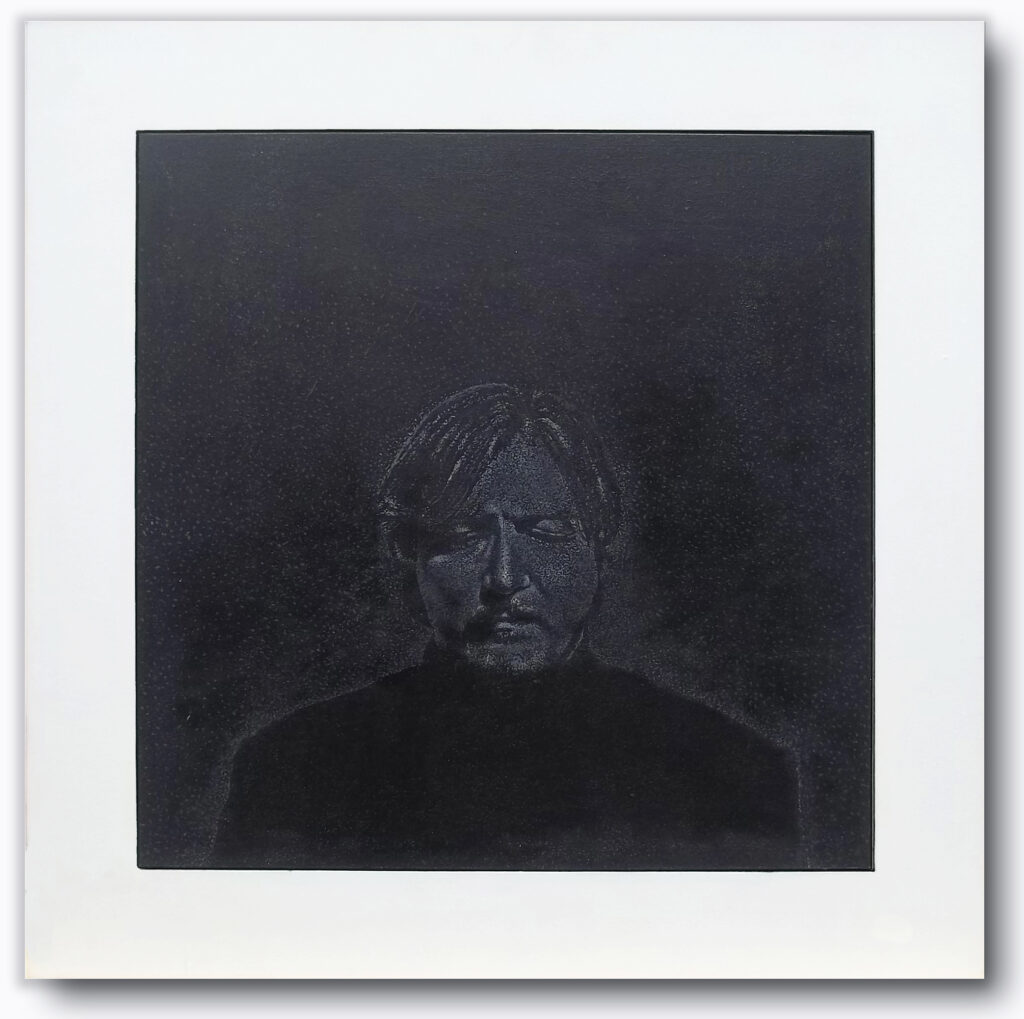
Rockwell’s performances on the theme of galleries goes back to about a decade earlier. In 1988 he decided to drop by at 64 of Toronto’s galleries, and ask their owners or administrators to fill out a form indicating in which direction their main entrance faces – north, east, south or west. Using the information he received he built a model, displayed on the wall, representing each gallery as a compartment on a square grid. A small aperture on the respective wall of each indicates the direction of the entrance. Here one is reminded of Sol Le Witt’s work, e.g., his permutations of the edges of a cube. The appearance of the material art object is entirely determined by the rules underwriting its construction. Indeed, Le Witt has been a major influence on Rockwell. This year Rockwell repeated the performance. In the updated version he struggled, sadly, to find 64 galleries in the city.
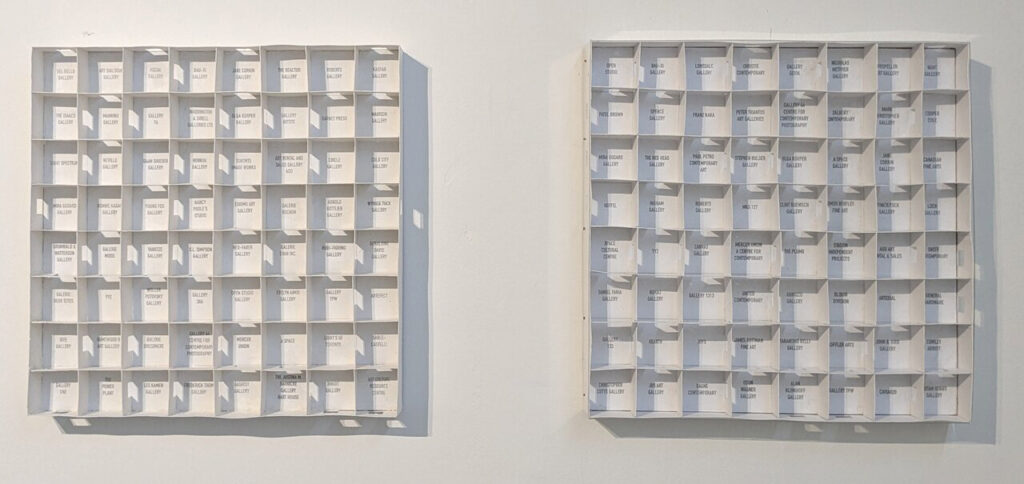
Rockwell’s original motive for this earlier gallery performance was to find a way to introduce himself to the various galleries, and learn how they operate. This kernel of an idea became an abiding theme for him. As well, it is illustrative of Rockwell’s entrepreneurship, his willingness to go out and introduce himself and his ideas, more importantly, to people. As testament to the footwork this performance demanded, he has chosen to encase, and thus preserve, the very pair of shoes he wore walking around the city.
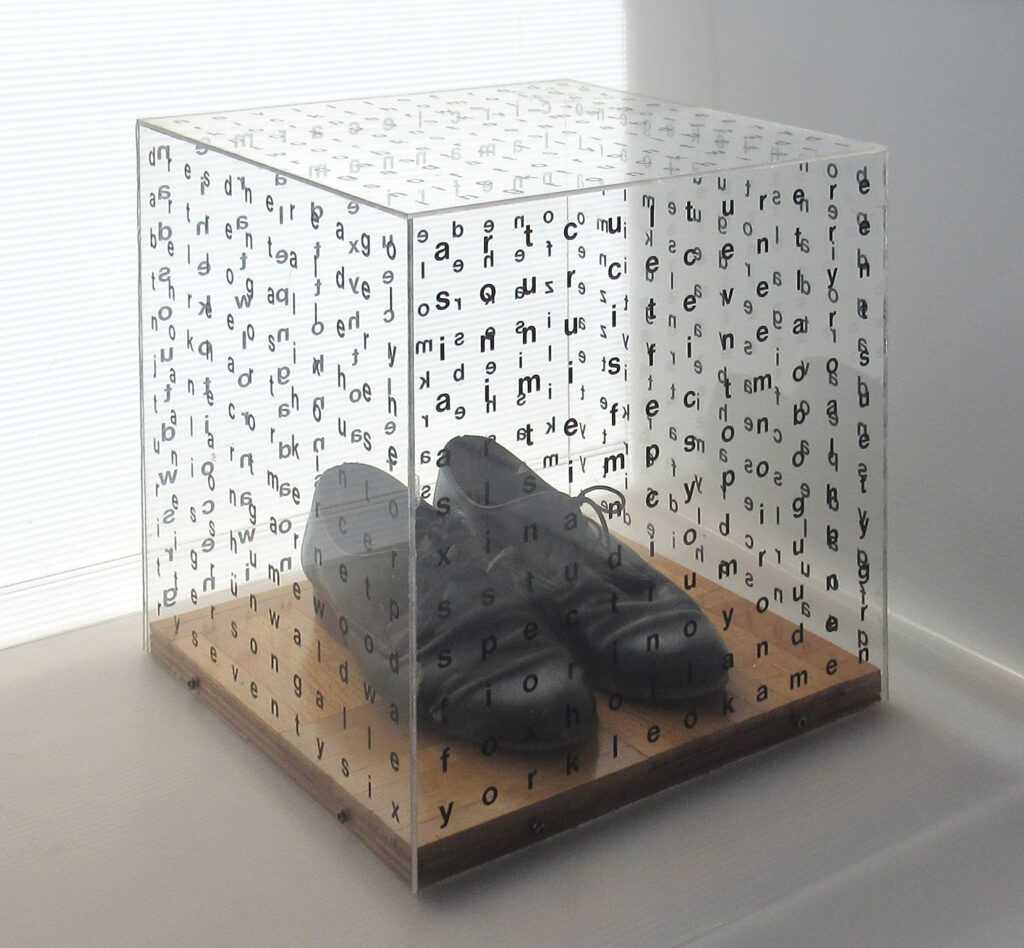
Here we see Rockwell’s wit – humour and sharp intelligence – shining through. Although physically the work occupies a modest amount of space, it brims over with ideas and reflections on the nature of art itself. Clearly Rockwell loves art, both the making of it and as its cultural wealth. Not to be missed as well is an array of collages he has meticulously produced – small works on paper – that investigate the margins of pictures and images. Beautiful work altogether.
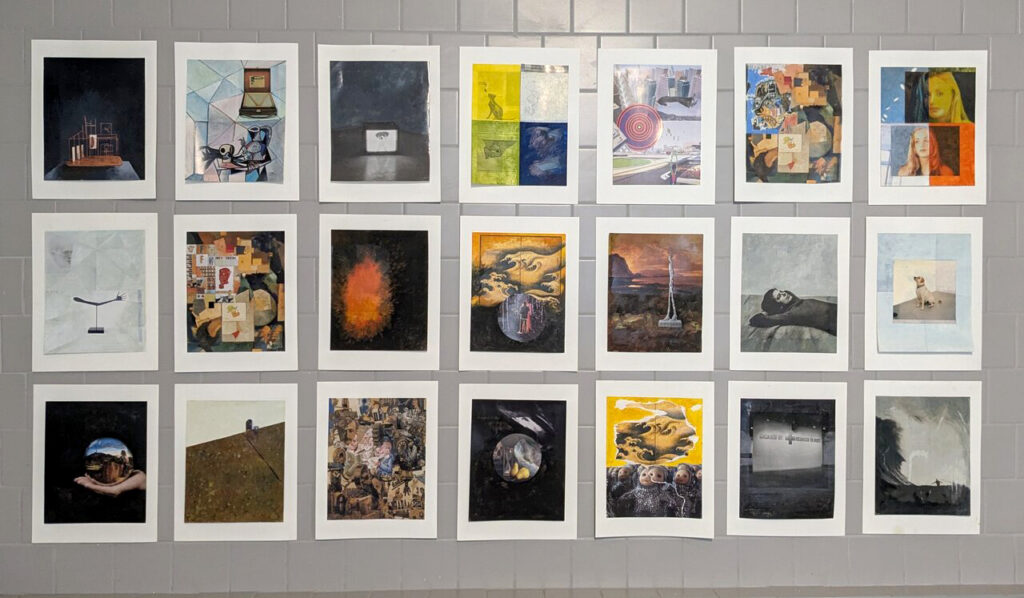
*Exhibition information: Steve Rockwell, Meditations on Space, June 5 – 30, 2025, Sheff Contemporary, 1276 Danforth Ave, Toronto. By appointment only (416-792-7792).
